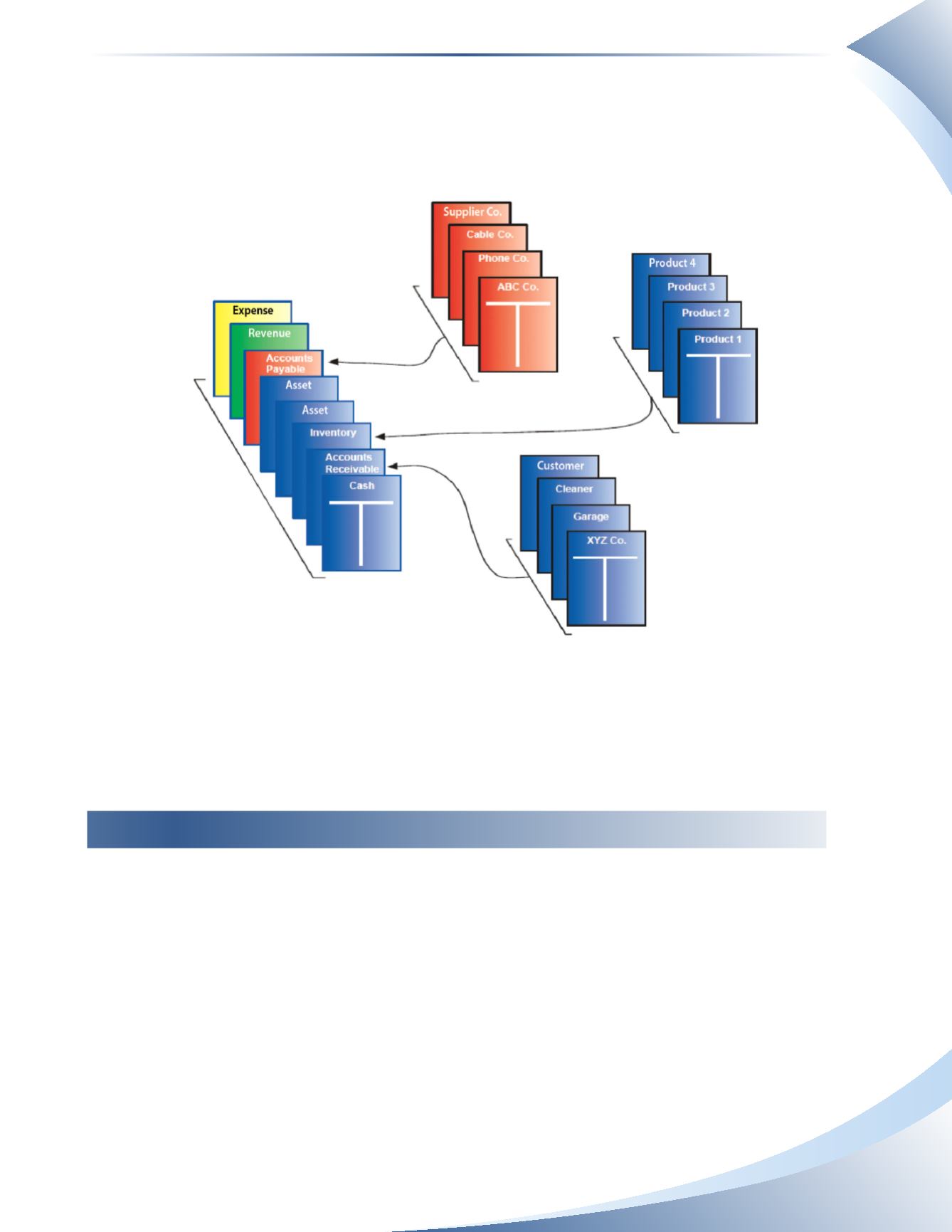
261
Chapter 9
Accounting Information Systems
There are different subsidiary ledgers to control various assets or liabilities (e.g. inventory, long-term
assets, accounts receivable). Figure 9.3 illustrates how the accounts payable, accounts receivable and
inventory subsidiary ledgers are totalled and reconciled to their corresponding control account in
the general ledger.
________________
figure 9.3
Once the subledgers have been reconciled to the control accounts in the general ledger, a trial
balance can be created with the general ledger accounts and balances. The rest of the accounting
cycle continues as previously described.
Using Special Journals and Subsidiary Ledgers
It is important to emphasize that the special journals are used to group similar transactions that
would normally appear in the general journal.Transactions are entered into the appropriate journal
when they occur. For the most part, the subledgers are immediately updated from the special
journals while the general ledger is updated at the end of the accounting period. The details of
posting from the special journals to the ledgers will be discussed with each journal.
GENERAL LEDGER
(includes all assets,
liability, owner’s equity
revenue and expense
accounts)
Total of the sub ledger
accounts must equal the
Accounts Receivable
controlling account
Total of the sub ledger
accounts must equal the
Inventory controlling account
Total of the sub ledger
accounts must equal the
Accounts Payable
controlling account
ACCOUNTS PAYABLE
SUBSIDIARY LEDGER
(individual accounts
payable)
INVENTORY SUBSIDIARY
LEDGER
(individual types of products)
ACCOUNTS RECEIVABLE
SUBSIDIARY LEDGER
(individual accounts
receivable from customers)


